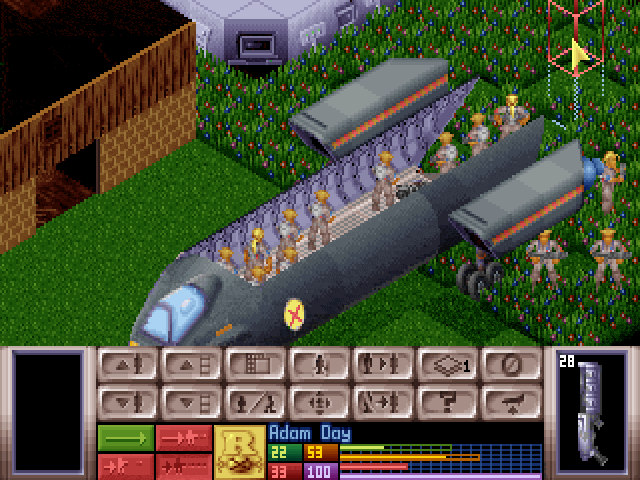
The first game I discussed for this holiday dealt with the experience on a personal level, free of monsters. The second focused on a particular monster. Now, let’s talk about an overall game that actually captures an atmosphere of dread. The situation in X-Com: UFO Defense is as follows:
Aliens are attacking human cities. They land in the town, blast civilians and leave. The multi-national community has created X-Com to investigate and prevent these attacks. They get a couple jet fighters with missile launchers, a transport to carry a squad of around a dozen troopers, some scientists to research alien technology and a workshop to build new equipment based on those discoveries. If X-Com does well, the nations of the world will keep giving them money. All you have to do, as the leader of X-Com, is at least keep your soldiers from dying.
It’s turn-based squad combat, and mechanically it isn’t bad. Every solider has a set amount of time units to use every turn, and if you’re out of time units when the enemy turn comes around, you can’t shoot back at them when you see them. So you need to plan the moves and position of your squad carefully. Add to this the fact that you start with just over a half-dozen volunteers with the combat experience of a weekend’s paintballing, armed with weapons purchased on a budget and multi-pocketed jumpsuits for armor, and the result is a surprisingly tense scenario in which a wrong move will have the aliens blasting your so-called professional alien hunters with glee.
The idea of putting humanity at an initial disadvantage worked in Independence Day and it works very well here. With limited funds, there’s only so much you can do when you start out. To get ahead, and gain any sort of tangible advantage on your foes, you need to meet them in combat, disadvantage or no. The combat in underscored by a minimalist, menacing theme that captures the tension perfectly, and night missions are particularly terrifying.
Stopping a terror attack means landing in the city and hunting building by building, room by room for the aliens. On their turn, the aliens blast any civilians they see, but you can’t see it. Their movement is hidden unless your soldiers can see what’s going on, so for the most part you’ll hear the fire of plasma weapons and the screams of the dying. Not only is it chilling in and of itself, it reinforces two key points of the scenario. If you don’t hurry, there won’t be any civilians left to save; and if too many of them die, you’re going to piss off your investors.
The terror in attack an alien craft or base is a different sort. Sometimes you shoot down a UFO over land, sometimes it lands on its own for some unknown purpose, and on occasion you’ll find a base they’ve established on Earth. In all these scenarios, you’re taking your team into an environment where you are at an even more severe disadvantage. In the case of a crash, they know you’re coming and are waiting for you. Just getting off of the transport can be punishment, as the aliens helpfully assist you in reenacting the Normandy landings. Even if you survive the initial encounter, getting into the UFO or alien base means going into a confined space with which you’re unfamiliar but the enemy knows intimately. Be prepared for ambushes, booby traps and unforeseen consequences. You might have your squad kitted out with flying suits, repeating plasma blasters and remote-controlled rocket launchers, and you still may find yourself biting your nails in nervousness as they open a new door in an alien stronghold.
This is why X-Com: UFO Defense holds up after many, many years of innovation and progression in the realm of game design. It’s straightforward presentation, atmosphere of dread and unrelenting challenge make it a lot of fun to play even today. It’s also pretty damn scary, to the point where you can almost find yourself sympathizing with the stereotypical swaggering platoon leader who freaks out when the soldiers actually come into contact with the enemy. In other words, you almost feel sorry for Gorman from Aliens. Almost.



Leave a Reply